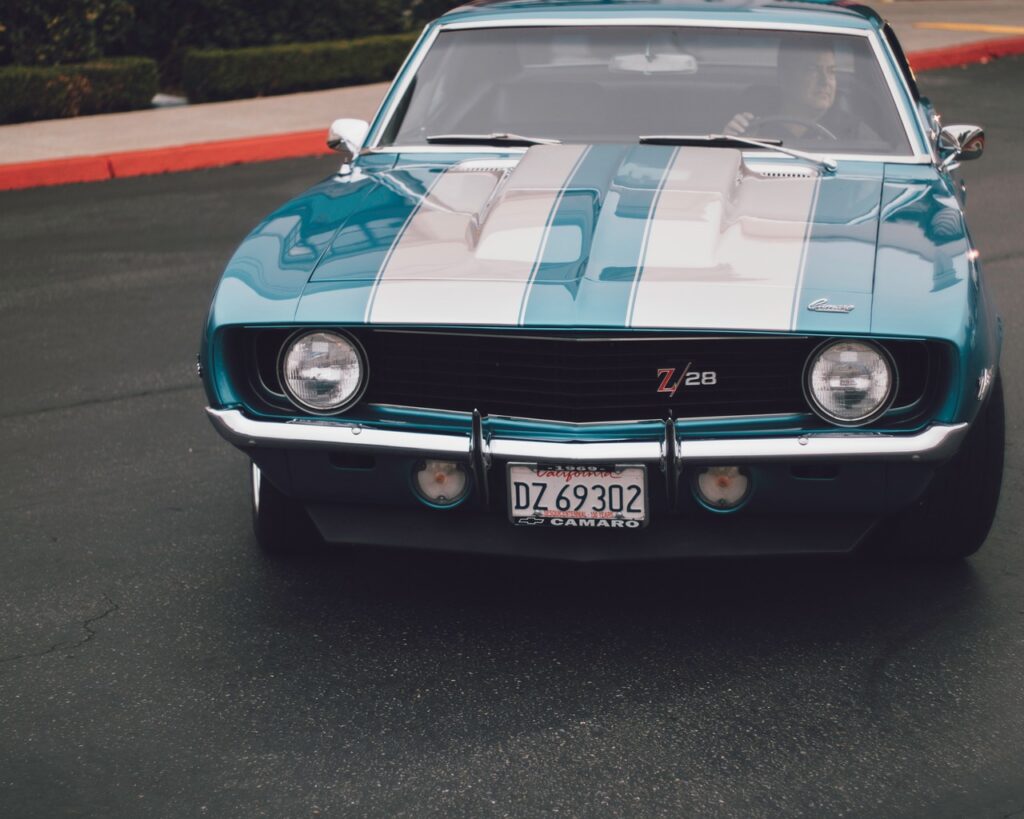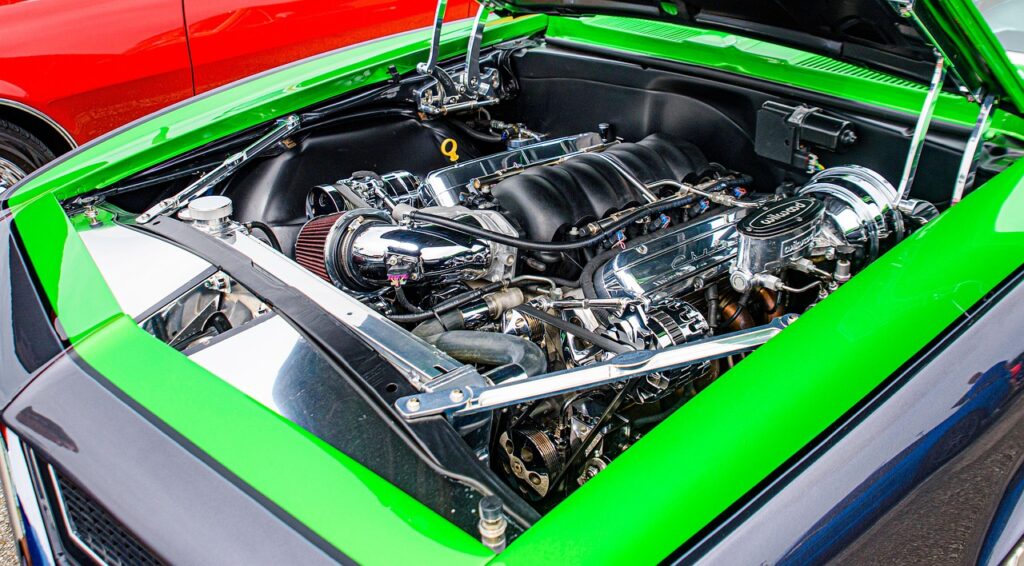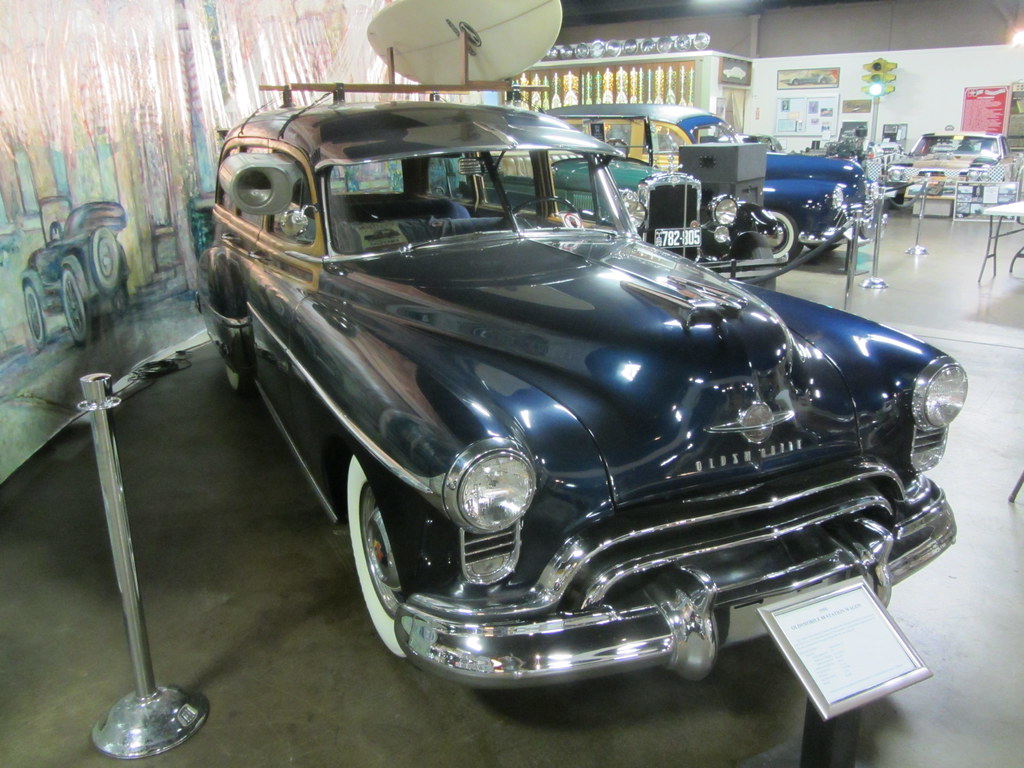The automotive industry has consistently been a vibrant landscape of relentless innovation and transformative progress. Among the myriad advancements that have profoundly shaped modern vehicles, the seminal introduction of turbocharged engines stands out as a truly significant and game-changing milestone. In the nascent years of the 1960s, two pioneering models boldly made waves with their groundbreaking turbocharged designs, marking an exciting new chapter in automotive engineering. These trailblazers were none other than the Oldsmobile Jetfire and the Chevrolet Corvair, vehicles that would irrevocably pave the way for the sophisticated turbocharged machines we effortlessly navigate today. This article embarks on an in-depth journey to meticulously explore the rich history, intricate engineering, and lasting impact of these remarkable cars, revealing how their early challenges ultimately forged the path for future successes in forced induction.
In the early 1960s, American consumers found themselves increasingly drawn to the allure of smaller, lighter, and more efficient European cars, such as the iconic Mini and the ubiquitous Volkswagen Beetle. These imports offered affordability, widespread availability, and, crucially, consumed vastly less fuel compared to the thirsty American V8s prevalent at the time. This presented a formidable challenge to Detroit’s traditional automotive philosophy. Rather than abandoning the beloved big V8s entirely, Oldsmobile, in a strategic move to counter this growing trend, turned its attention to its F85 Cutlass, which, despite its considerable size, was considered one of the firm’s ‘smaller’ offerings. It featured a comparably diminutive 3.5-liter V8, presented as a more fuel-efficient option, setting the stage for a groundbreaking technological leap.
To further enhance fuel economy without compromising the performance synonymous with a ‘big’ V8, Oldsmobile forged an intriguing partnership with Garrett Corporation. At that time, Garrett was primarily known for industrial turbochargers that were certainly not designed for automotive applications. Collaboratively, these two giants embarked on developing automotive-suitable blowers, featuring a smaller diameter and specialized internal combustion-focused pipework to ensure optimal operation within a vehicle. This marked a crucial step in adapting turbocharging for mass-produced passenger cars. The exact chronology of which vehicle truly held the distinction of being the ‘first’ turbocharged production car in the world—the Jetfire or the Chevrolet Corvair Monza Spyder, which emerged mere weeks later—remains a subject of debate. Given that both were General Motors divisions, the close timing often renders the distinction disingenuous, underscoring the fierce intramural race within GM to pioneer this advanced engine technology.
1. **The Automotive Industry’s Quest for Innovation: The Turbocharged Dawn**The early 1960s were a period of intense innovation and transformation within the global automotive industry. Amidst a landscape increasingly shaped by concerns over fuel efficiency and a burgeoning interest in more compact designs, the introduction of turbocharged engines emerged as a truly pivotal technological advancement. This bold new direction promised to extract more power from smaller displacement engines, offering a compelling blend of performance and economy that had, until then, largely eluded mass-produced vehicles.
The early 1960s were a period of intense innovation and transformation within the global automotive industry. Amidst a landscape increasingly shaped by concerns over fuel efficiency and a burgeoning interest in more compact designs, the introduction of turbocharged engines emerged as a truly pivotal technological advancement. This bold new direction promised to extract more power from smaller displacement engines, offering a compelling blend of performance and economy that had, until then, largely eluded mass-produced vehicles.
It was within this dynamic environment that two American automotive giants, Oldsmobile and Chevrolet, concurrently embarked on projects that would forever alter the course of vehicle engineering. Their efforts with the Oldsmobile Jetfire and the Chevrolet Corvair represented a significant leap, attempting to bring a sophisticated, battle-proven technology – previously confined to aircraft and heavy machinery – to the everyday passenger car. This era marked the very beginning of turbocharging’s journey from an exotic, specialized application to a mainstream component, fundamentally reshaping how future generations of vehicles would be designed and powered.
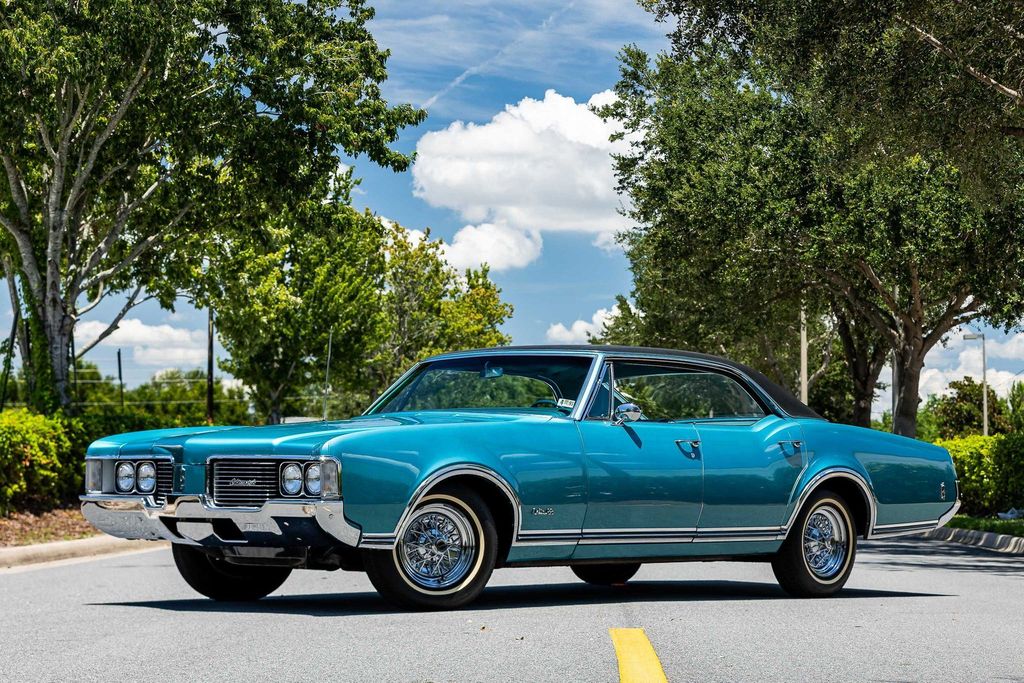
2. **Oldsmobile Jetfire: “Jet Fuel for the Road” – The Marketing Hype**When the Oldsmobile Jetfire made its highly anticipated debut, it was boldly marketed as the world’s first turbocharged car capable of running on “Jet Fuel.” This audacious advertising campaign was a calculated move designed to ignite consumer excitement and capture the public’s imagination, leveraging the futuristic allure of the nascent Space Age. While the Jetfire did not, in fact, utilize actual jet fuel, its marketing strategy certainly created a significant buzz, positioning the car as a marvel of contemporary engineering.
Beneath the captivating marketing, the Jetfire boasted genuinely impressive specifications for its time, designed to deliver an exhilarating driving experience. At its core was an engine featuring a high compression ratio of 10.25:1, complemented by a sophisticated forced air induction system. This combination was engineered to maximize power output and efficiency, setting the Jetfire apart as a true pioneer in performance-oriented automotive design. Oldsmobile proudly won the race against its sister division, Chevrolet, by introducing the Jetfire in April 1962, making it the first American manufacturer, and indeed, the first globally, to offer a turbocharged car to the public. It was built upon the foundation of Oldsmobile’s compact F-85 series, incorporating a robust aluminum-block 215-cubic inch V-8 engine, which would later find a new life in British Land Rovers and Range Rovers.
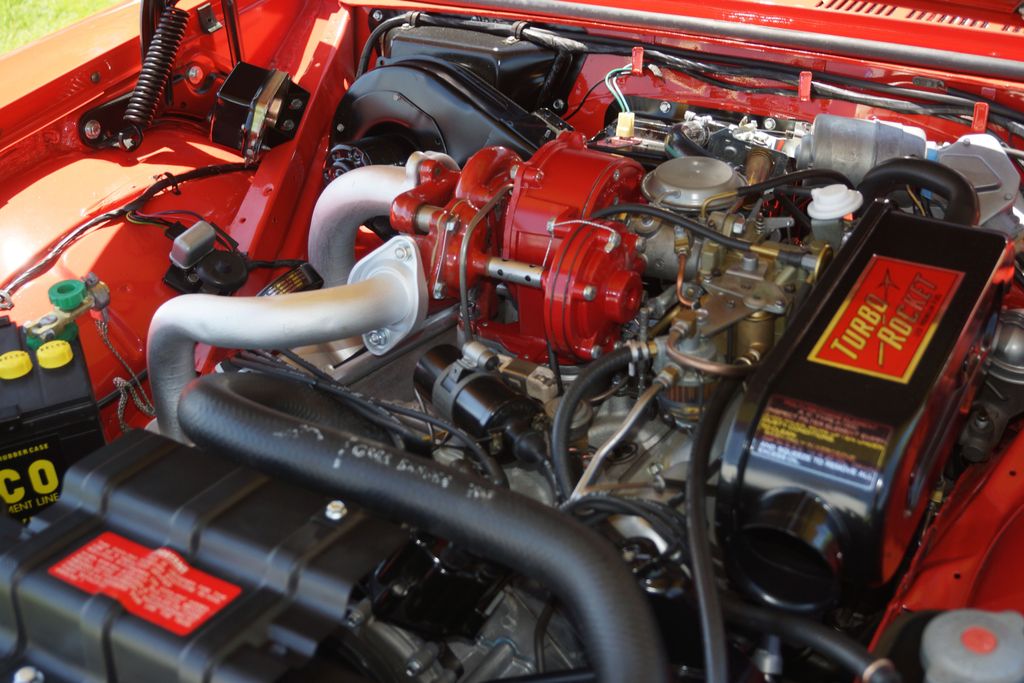
3. **At the Heart of the Jetfire: The Turbo-Rocket Engine**At the very core of the Oldsmobile Jetfire’s innovation was its revolutionary “Turbo-Rocket” engine, a veritable marvel of engineering for its era. This lightweight aluminum 3.5L V8 represented one of the very first instances of turbocharging successfully implemented in a mass-production passenger car. It generated an impressive 215 horsepower—a remarkable achievement in a period largely dominated by larger, heavier, and naturally aspirated engines, underscoring Oldsmobile’s technical prowess and forward-thinking approach to automotive design.
To achieve this pioneering feat, Oldsmobile entered into a strategic partnership with Garrett Corporation, a company previously focused on industrial turbochargers. Together, they developed automotive-suitable blowers featuring a smaller diameter and specialized internal combustion-focused pipework. The resulting T5 turbocharger was ingeniously designed as a bolt-on unit specifically for a special version of the F85 Cutlass, which earned the memorable moniker ‘Jetfire.’ This integration was a revelation in performance for the compact platform.
Indeed, the “Turbo-Rocket” engine delivered a stunning enhancement in power and torque. It added a significant 30 percent more torque to the non-turbocharged version’s output, culminating in a robust 300 lb-ft by just 3200 rpm, with an impressive 280 lb-ft reportedly available from as low as 2000 rpm. This substantial boost in low-end torque drastically improved the vehicle’s responsiveness and acceleration. Equipped with this cutting-edge engine, the F85 Jetfire could achieve 100 mph approximately 10 seconds faster than its most powerful non-turbo sibling, and remarkably, hit 60 mph almost twice as quickly as the entry-level 155bhp model. Oldsmobile even claimed the Jetfire was the first car in the U.S. auto industry to achieve the magical one horsepower per cubic inch in a regular production model, a claim previously made by Chrysler and Chevrolet for special production vehicles.
4. **The Methanol Injection System: A Double-Edged Sword for the Jetfire**To unlock its impressive power output and safeguard engine longevity, Oldsmobile ingeniously incorporated a methanol injection system into the Jetfire’s design. This system was crucial for maximizing performance while simultaneously preventing the destructive phenomenon of engine knock or detonation, which is a common challenge in high-compression, turbocharged gasoline engines. It worked by spraying a precisely calibrated mixture of water and methanol—dubbed ‘rocket fluid’—into the combustion chamber, which served to cool the engine’s internal temperatures and suppress uncontrolled ignition, thereby allowing for higher boost pressures.
However, this innovative solution came with a significant caveat: it demanded diligent and regular maintenance from the owner. Drivers were obligated to replenish the five-quart methanol reservoir, conveniently located under the hood, approximately every 1,000 miles. Neglecting this crucial refill would trigger the engine to automatically throttle down, entering a low-power mode where the boost pressure was deliberately limited by a butterfly valve. This protective measure, while mechanically sound, led to considerable frustration among customers who often failed to grasp the car’s unique and demanding requirements, frequently complaining about a loss of power that was easily resolved by topping up the fluid.
Furthermore, the long-term reliability of this complex system proved problematic. The alcohol content in the ‘rocket fluid’ unfortunately caused hoses and diaphragms within the system to become brittle over time, leading to leaks and failures. A poorly designed seal also allowed gunk to accumulate, which could seize the turbine itself, compromising performance. Even more concerning, the turbo-rocket fluid reservoir remained pressurized when the car was off, creating a potential hazard where fluid could partially fill the cylinders, leading to severe damage like broken rods and pistons upon restart. These compounding issues significantly tarnished the Jetfire’s reputation for reliability.
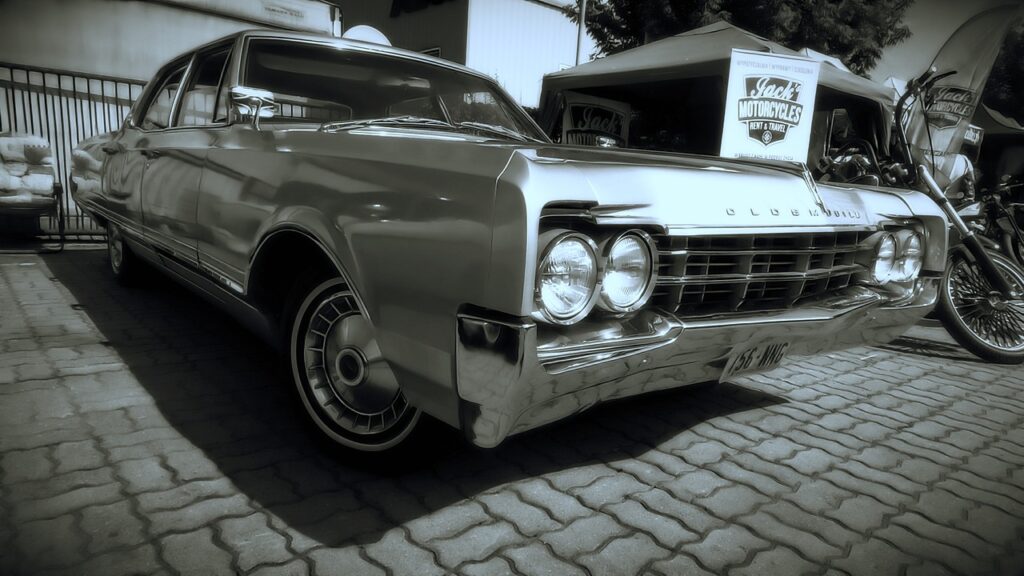
5. **The Marketing Challenge and Brief Legacy of the Oldsmobile Jetfire**While Oldsmobile’s initial marketing campaign for the Jetfire proved effective in generating excitement, it quickly encountered formidable challenges once the cars were in consumers’ hands. The intricacies of the car’s operation, particularly the mandatory methanol injection system, proved baffling for many average consumers. This confusion, coupled with the inconvenient necessity of regular fluid top-ups and the system’s inherent reliability issues, meant the Jetfire struggled to carve out a substantial market share. Consequently, its production run was remarkably short-lived, with only 3,765 units produced in 1962, a number that starkly reflects the commercial struggles stemming from its maintenance complexities and the specialized knowledge required for ownership.
Adding to the vehicle’s woes, reports from the era, including those by Car and Driver, highlighted several critical drawbacks in the Jetfire’s fundamental dynamics. These included a ‘dead-slow steering’ system, an overly ‘soft suspension’ that compromised handling, and ‘touchy, all-drum brakes’ that further detracted from the driving experience. The combination of these handling deficiencies and the engine’s maintenance demands led to widespread owner dissatisfaction. So pervasive were the problems that Oldsmobile frequently resorted to offering Jetfire owners the option of having the turbocharger assembly removed and replaced with a more conventional four-barrel carburettor to rectify the erratic fuel injection system, a drastic measure that essentially negated the car’s primary innovation.
Despite its brief production span—with turbocharging being dropped from the F-85 line by 1964—the Oldsmobile Jetfire nonetheless represents a crucial chapter in the annals of automotive history. It served as a vital, albeit challenging, demonstration of the profound potential inherent in turbocharging and forced induction concepts, ideas that would eventually become ubiquitous and mainstream in later decades. The lessons painfully learned from the Jetfire’s commercial difficulties and technical quirks—particularly regarding consumer education and system reliability—significantly contributed to a deeper understanding of turbocharged engines, thereby influencing future designs and engineering approaches that would eventually lead to their successful integration into everyday vehicles.
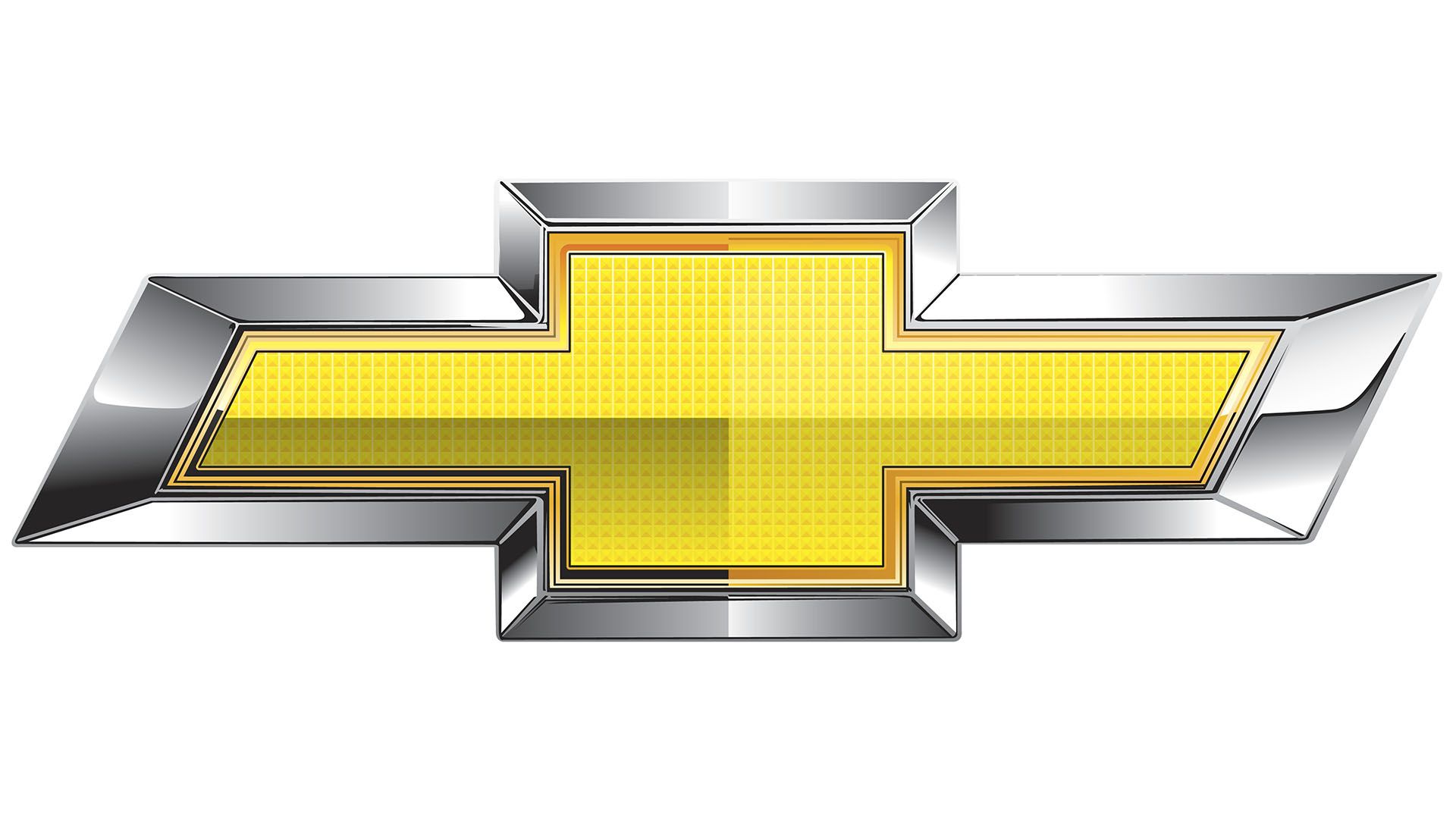
6. **The Chevrolet Corvair: A Unique Rear-Engine, Air-Cooled Approach**Simultaneously, as Oldsmobile was introducing its Jetfire, Chevrolet was also making its own distinct waves in the automotive world with the Corvair. Introduced in the early 1960s, the Corvair stood out as a radically different American car of its time, eschewing conventional Detroit design principles. Its most defining characteristic was its innovative air-cooled, rear-engine layout, a configuration more commonly associated with European sports cars and economy vehicles, most notably the Volkswagen Beetle. This design choice gave the Corvair a unique character and driving dynamic, distinguishing it sharply from its American contemporaries.
Chevrolet’s turbocharged version of the Corvair, the Monza Spyder, launched shortly after the Oldsmobile Jetfire, offered a distinct take on forced induction technology. Powering this unique model was a 2.3L boxer engine, boosted to produce around 150 horsepower. While it didn’t quite match the raw power output of the Jetfire, the Corvair Monza Spyder delivered an agile and engaging driving experience, attributed to its lightweight construction and inherent design balance. Its unconventional layout, however, would later become a focal point of public scrutiny regarding safety, which ultimately tarnished its reputation.
Beyond its engine, one of the most intriguing aspects of the Corvair was its pioneering all-independent suspension system. This advanced feature significantly contributed to its superior handling characteristics and ride quality, further distinguishing it from typical American sedans of the era. The Corvair’s overall design was notably ahead of its time, prioritizing a blend of performance and sophisticated driving dynamics while still striving to maintain comfort and practicality for the average consumer. However, the very uniqueness of its unconventional layout also inadvertently laid the groundwork for future safety concerns that would ultimately, and controversially, overshadow its innovative engineering achievements.
Car Model Information: 1964 Chevrolet Corvair Monza
Caption: 1964 Chevrolet Corvair Monza
Name: Chevrolet Corvair
Manufacturer: Chevrolet
Production: 1960–1969
Platform: GM Z platform
Chassis: Unibody
ModelYears: 1960–1969
Assembly: United States,Kansas City, Missouri,Oakland, California,Van Nuys,St. Louis,Flint, Michigan,Belgium,Canada,Mexico,South Africa,Switzerland,Venezuela
Class: Compact car
Successor: Chevrolet Vega
Layout: Rear-engine, rear-wheel-drive layout
Categories: All Wikipedia articles written in American English, All articles lacking in-text citations, All articles needing additional references, All articles with dead external links, All articles with specifically marked weasel-worded phrases
Summary: The Chevrolet Corvair is a rear-engined, air-cooled compact car manufactured and marketed by Chevrolet over two generations between 1960 and 1969. The Corvair was a response to the increasing popularity of small, fuel-efficient automobiles, particularly the imported Volkswagen Beetle and the success of American-built compacts like the Rambler American and Studebaker Lark.
The first generation (1960–1964) was offered as a four-door sedan, two-door coupe, convertible, and four-door station wagon. A two- and four-door hardtop and a convertible were available second generation (1965–1969) variants. The Corvair platform was also offered as a subseries known as the Corvair 95 (1961–1965), which consisted of a passenger van, commercial van, and pickup truck variant. Total production was approximately 1.8 million vehicles from 1960 until 1969.
The name “Corvair” was first applied in 1954 to a Corvette-based concept with a hardtop fastback-styled roof, part of the Motorama traveling exhibition. When applied to the production models, the “air” part referenced the engine’s cooling system.
A prominent aspect of the Corvair’s legacy derives from controversy surrounding its handling, articulated aggressively by Ralph Nader’s Unsafe at Any Speed and tempered by a 1972 Texas A&M University safety commission report for the National Highway Traffic Safety Administration (NHTSA) which found that the 1960–1963 Corvair possessed no greater potential for loss of control in extreme situations than contemporary compacts.
To better counter popular inexpensive subcompact competitors, notably the Beetle and Japanese imports such as the Datsun 510, GM replaced the Corvair with the more conventional Chevrolet Vega in 1970.
Get more information about: Chevrolet Corvair
Buying a high-performing used car >>>
Brand: Chevrolet Model: Corvair
Price: $29,988 Mileage: 74,787 mi.
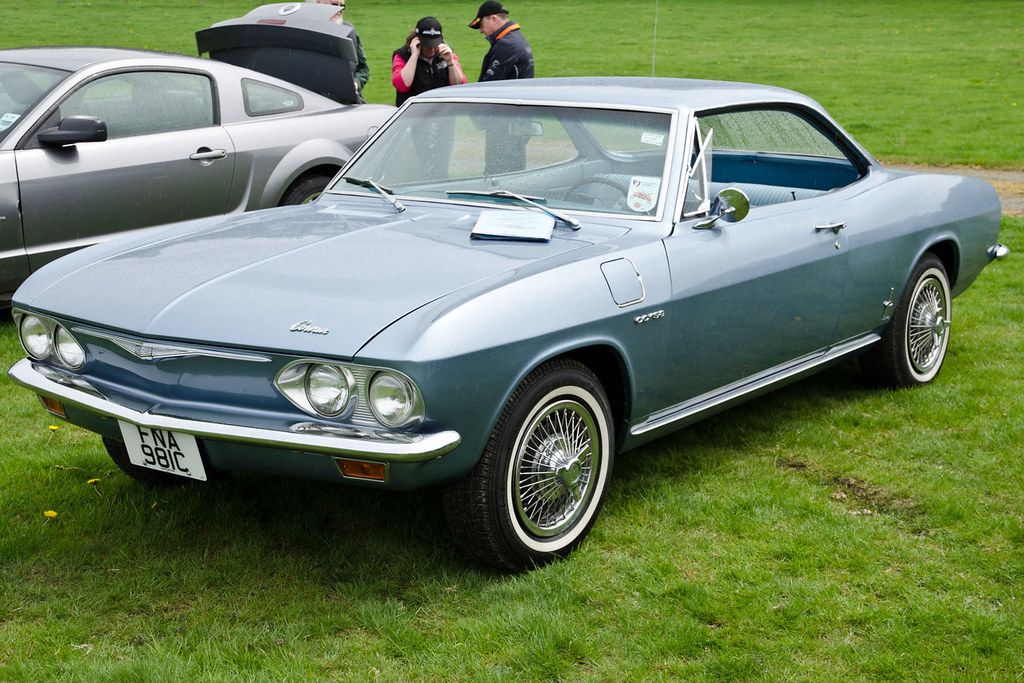
7. **Concealed Development and Early Woes of the Corvair Turbo**The development of the turbocharged Corvair Monza Spyder within Chevrolet was steeped in secrecy, a common practice among General Motors divisions at the time. To mask the project’s true nature, it was ingeniously disguised as a venture for Holden, GM’s Australian subsidiary. Robert Benzinger, a former senior project engineer, famously recounted in a 1975 speech to the Corvair Society of America, “We got Holden drafting paper, Holden stationery, Holden purchase orders—the whole shot,” illustrating the elaborate efforts taken to maintain confidentiality and avoid inter-divisional competition or scrutiny.
Even without a turbocharger, managing heat was an inherent challenge for the Corvair’s air-cooled aluminum engine, a design choice that contrasted sharply with the water-cooled engines prevalent in most American cars. However, the introduction of turbocharging intensely exacerbated this issue, pushing the engine’s thermal limits. Mr. Benzinger dramatically exclaimed that “The full output of the engine cannot be cooled!” during testing, highlighting the severe overheating problems. Chevrolet engineers, perhaps optimistically, assumed that “the driver would either run out of road or run out of guts before the engine overheated,” a risky proposition that quickly proved unsound when test engines began literally burning holes through their valves.
Further compounding these early woes were issues with the belt-driven cooling fan, a critical component for the air-cooled engine. Belts frequently failed at top revolutions per minute due to the substantial weight of the fan, leading to significant reliability concerns. In an attempt to solve this, Chevrolet partnered with DuPont to create a lighter fan made from Delrin, a promising new plastic. This solution, however, unexpectedly led to an even more alarming problem. After a test drive from Detroit to Ohio, a driver reported that upon accelerating from a tollbooth, he “started to choke, and my eyes started burning.” A frantic investigation revealed that in cold weather, with the heater on full blast, so much current flowed through the battery in the hot engine compartment that it essentially boiled. The vaporized battery acid reacted chemically with the Delrin fan to produce formaldehyde gas, which then flooded the cabin, creating a dangerously toxic environment. This terrifying incident led to the immediate substitution of the Delrin fan with a cast aluminum one, illustrating the unforeseen complexities and hazards of pushing technological boundaries without full understanding of material interactions and extreme operational conditions.
Car Model Information: 2025 Volkswagen Atlas 2.0T SE
Caption: 1964 Chevrolet Corvair Monza
Name: Chevrolet Corvair
Manufacturer: Chevrolet
Production: 1960–1969
Platform: GM Z platform
Chassis: Unibody
ModelYears: 1960–1969
Assembly: United States,Kansas City, Missouri,Oakland, California,Van Nuys,St. Louis,Flint, Michigan,Belgium,Canada,Mexico,South Africa,Switzerland,Venezuela
Class: Compact car
Successor: Chevrolet Vega
Layout: Rear-engine, rear-wheel-drive layout
Categories: All Wikipedia articles written in American English, All articles lacking in-text citations, All articles needing additional references, All articles with dead external links, All articles with specifically marked weasel-worded phrases
Summary: The Chevrolet Corvair is a rear-engined, air-cooled compact car manufactured and marketed by Chevrolet over two generations between 1960 and 1969. The Corvair was a response to the increasing popularity of small, fuel-efficient automobiles, particularly the imported Volkswagen Beetle and the success of American-built compacts like the Rambler American and Studebaker Lark.
The first generation (1960–1964) was offered as a four-door sedan, two-door coupe, convertible, and four-door station wagon. A two- and four-door hardtop and a convertible were available second generation (1965–1969) variants. The Corvair platform was also offered as a subseries known as the Corvair 95 (1961–1965), which consisted of a passenger van, commercial van, and pickup truck variant. Total production was approximately 1.8 million vehicles from 1960 until 1969.
The name “Corvair” was first applied in 1954 to a Corvette-based concept with a hardtop fastback-styled roof, part of the Motorama traveling exhibition. When applied to the production models, the “air” part referenced the engine’s cooling system.
A prominent aspect of the Corvair’s legacy derives from controversy surrounding its handling, articulated aggressively by Ralph Nader’s Unsafe at Any Speed and tempered by a 1972 Texas A&M University safety commission report for the National Highway Traffic Safety Administration (NHTSA) which found that the 1960–1963 Corvair possessed no greater potential for loss of control in extreme situations than contemporary compacts.
To better counter popular inexpensive subcompact competitors, notably the Beetle and Japanese imports such as the Datsun 510, GM replaced the Corvair with the more conventional Chevrolet Vega in 1970.
Get more information about: Chevrolet Corvair
Buying a high-performing used car >>>
Brand: Chevrolet Model: Corvair Monza Spyder
Price: $40,000 Mileage: 8,605 mi.
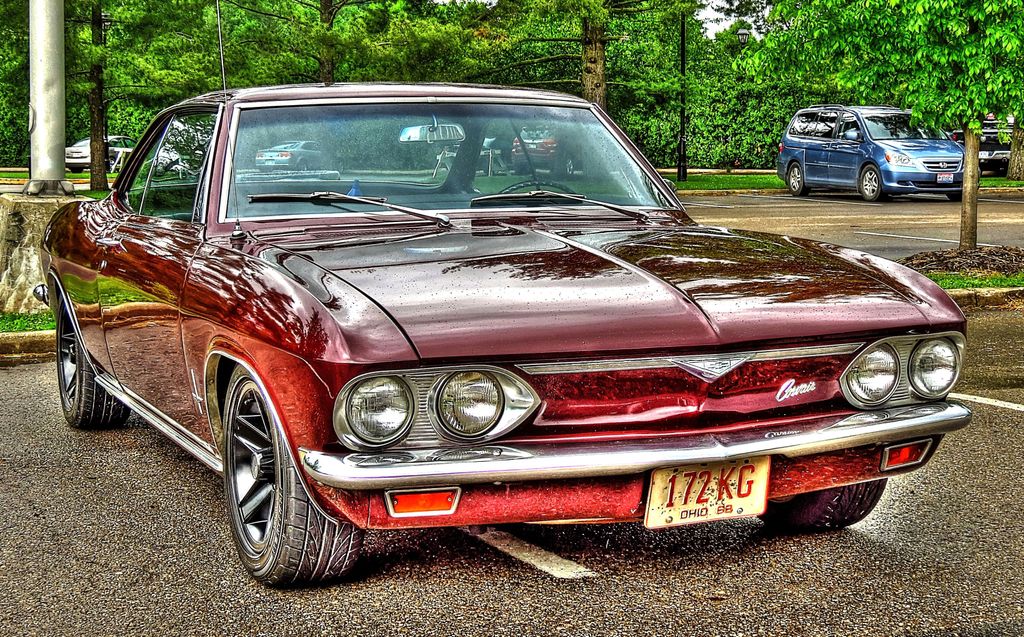
8. **The Corvair’s Handling and Safety Controversies**The Corvair’s path to widespread acceptance was unfortunately marred by controversies that extended beyond its engineering quirks. While its unconventional rear-engine design offered unique handling dynamics and a distinct character on the road, this very uniqueness became the focal point of intense public scrutiny, particularly concerning safety. This began to snowball with the release of Ralph Nader’s seminal 1965 book, “Unsafe at Any Speed,” which prominently featured the Corvair, painting it as a “deathtrap” due to alleged inherent instability in its handling, specifically referencing the early models’ swing-axle rear suspension design.
Nader’s criticism ignited a national debate about automotive safety, fundamentally altering consumer activism and pushing for more stringent regulations. He argued that the Corvair’s design made it prone to dangerous oversteer, especially when driven aggressively or under specific conditions, leading to a higher risk of rollovers. Despite Chevrolet’s later refinements to the suspension system, which largely addressed these handling characteristics in subsequent models, the damage to the Corvair’s public image was already profound and irreversible.
The negative publicity generated by the book and subsequent public outcry significantly contributed to a sharp decline in Corvair sales, ultimately overshadowing its innovative engineering achievements and leading to its discontinuation in 1969. While the National Highway Traffic Safety Administration (NHTSA) later conducted a thorough 140-page report that largely absolved the Corvair, stating its handling was “at least as good as the performance of some contemporary vehicles both foreign and domestic,” the court of public opinion had already delivered its verdict, effectively sealing the car’s fate.
Car Model Information: 1964 Chevrolet Corvair Monza
Caption: 1964 Chevrolet Corvair Monza
Name: Chevrolet Corvair
Manufacturer: Chevrolet
Production: 1960–1969
Platform: GM Z platform
Chassis: Unibody
ModelYears: 1960–1969
Assembly: United States,Kansas City, Missouri,Oakland, California,Van Nuys,St. Louis,Flint, Michigan,Belgium,Canada,Mexico,South Africa,Switzerland,Venezuela
Class: Compact car
Successor: Chevrolet Vega
Layout: Rear-engine, rear-wheel-drive layout
Categories: All Wikipedia articles written in American English, All articles lacking in-text citations, All articles needing additional references, All articles with dead external links, All articles with specifically marked weasel-worded phrases
Summary: The Chevrolet Corvair is a rear-engined, air-cooled compact car manufactured and marketed by Chevrolet over two generations between 1960 and 1969. The Corvair was a response to the increasing popularity of small, fuel-efficient automobiles, particularly the imported Volkswagen Beetle and the success of American-built compacts like the Rambler American and Studebaker Lark.
The first generation (1960–1964) was offered as a four-door sedan, two-door coupe, convertible, and four-door station wagon. A two- and four-door hardtop and a convertible were available second generation (1965–1969) variants. The Corvair platform was also offered as a subseries known as the Corvair 95 (1961–1965), which consisted of a passenger van, commercial van, and pickup truck variant. Total production was approximately 1.8 million vehicles from 1960 until 1969.
The name “Corvair” was first applied in 1954 to a Corvette-based concept with a hardtop fastback-styled roof, part of the Motorama traveling exhibition. When applied to the production models, the “air” part referenced the engine’s cooling system.
A prominent aspect of the Corvair’s legacy derives from controversy surrounding its handling, articulated aggressively by Ralph Nader’s Unsafe at Any Speed and tempered by a 1972 Texas A&M University safety commission report for the National Highway Traffic Safety Administration (NHTSA) which found that the 1960–1963 Corvair possessed no greater potential for loss of control in extreme situations than contemporary compacts.
To better counter popular inexpensive subcompact competitors, notably the Beetle and Japanese imports such as the Datsun 510, GM replaced the Corvair with the more conventional Chevrolet Vega in 1970.
Get more information about: Chevrolet Corvair
Buying a high-performing used car >>>
Brand: Chevrolet Model: Corvair
Price: $29,988 Mileage: 74,787 mi.
Read more about: The Chevrolet Corvair Story: A Tale of Innovation, Controversy, and Enduring Appeal

9. **Contrasting Fates: Jetfire vs. Corvair**Both the Oldsmobile Jetfire and the Chevrolet Corvair were truly revolutionary for their time, pushing the boundaries of automotive engineering with their pioneering turbocharged applications. Yet, their respective journeys ended in distinct commercial struggles, reflecting the unpreparedness of the market and the unforeseen complexities of introducing such advanced technology. The Jetfire, with its sophisticated methanol injection system and “Turbo-Rocket” engine, epitomized a technological leap, but its demanding maintenance requirements and reliability issues proved too cumbersome for the average consumer, leading to a mere 3,765 units produced in 1962 and turbocharging being dropped by 1964.
Conversely, the Corvair’s downfall was less about technical complexity and more about public perception and safety concerns. Despite its innovative rear-engine, air-cooled design and the agility offered by its turbocharged Monza Spyder variant, it became embroiled in a highly publicized safety controversy. This stark contrast highlights how different challenges—one primarily technical and consumer-facing, the other reputational and political—can equally derail groundbreaking innovations in the automotive sphere, even within the same corporate giant, General Motors.
Ultimately, the stories of both cars serve as poignant reminders that innovation, however brilliant, must be accompanied by robustness, ease of use, and public trust to achieve lasting commercial success. Their individual failures, though rooted in different issues, collectively tainted the nascent image of turbocharging in the American automotive landscape for decades, demonstrating that being “first” does not always guarantee long-term triumph in a rapidly evolving market.
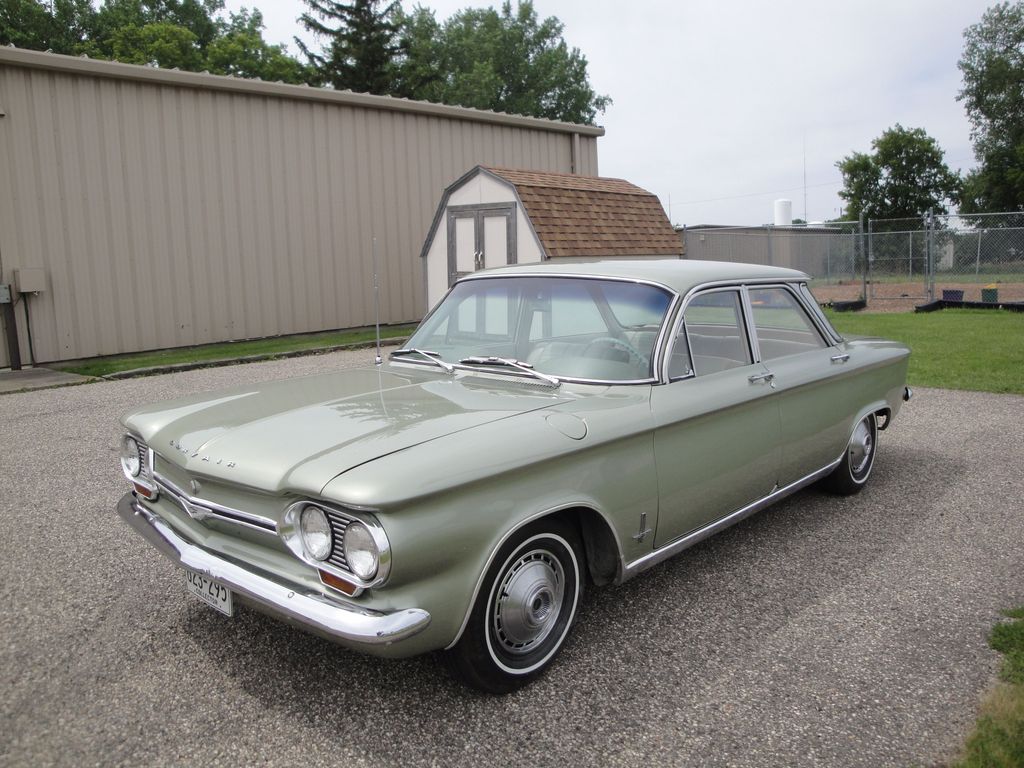
10. **The Post-GM Turbo Hiatus and Early Reappearances**The commercial failures of the Jetfire and Corvair had a chilling effect on the American automotive industry’s approach to turbocharging. For years following their discontinuation, Detroit largely shunned the technology, viewing it as a problematic and commercially unviable endeavor. This period marked a significant hiatus for mass-produced turbocharged passenger cars in the U.S., as manufacturers retreated to the familiar territory of larger, naturally aspirated V8s, reinforced by the prevailing maxim that “there is no replacement for displacement” and the era of relatively cheap gasoline, which disincentivized radical efficiency innovations.
The perception that turbochargers were inherently unreliable, complex, and prone to issues lingered, fueled by the widespread owner dissatisfaction experienced with GM’s early attempts. This meant that while the technology continued to be utilized in more specialized applications—such as diesel trucks, racecars, and some limited-production performance vehicles—it remained largely absent from the mainstream passenger car market. It would take a significant shift in market dynamics and a pioneering spirit from elsewhere to reignite interest.
Indeed, it wasn’t until the early 1970s that turbocharging began to tentatively reappear in production cars, primarily from European manufacturers. One notable example was the BMW 2002, introduced in 1970, which signaled a slow but steady resurgence of forced induction technology, setting the stage for its eventual, more widespread acceptance, driven by evolving performance demands and stricter emissions regulations that would soon reshape the global automotive landscape.
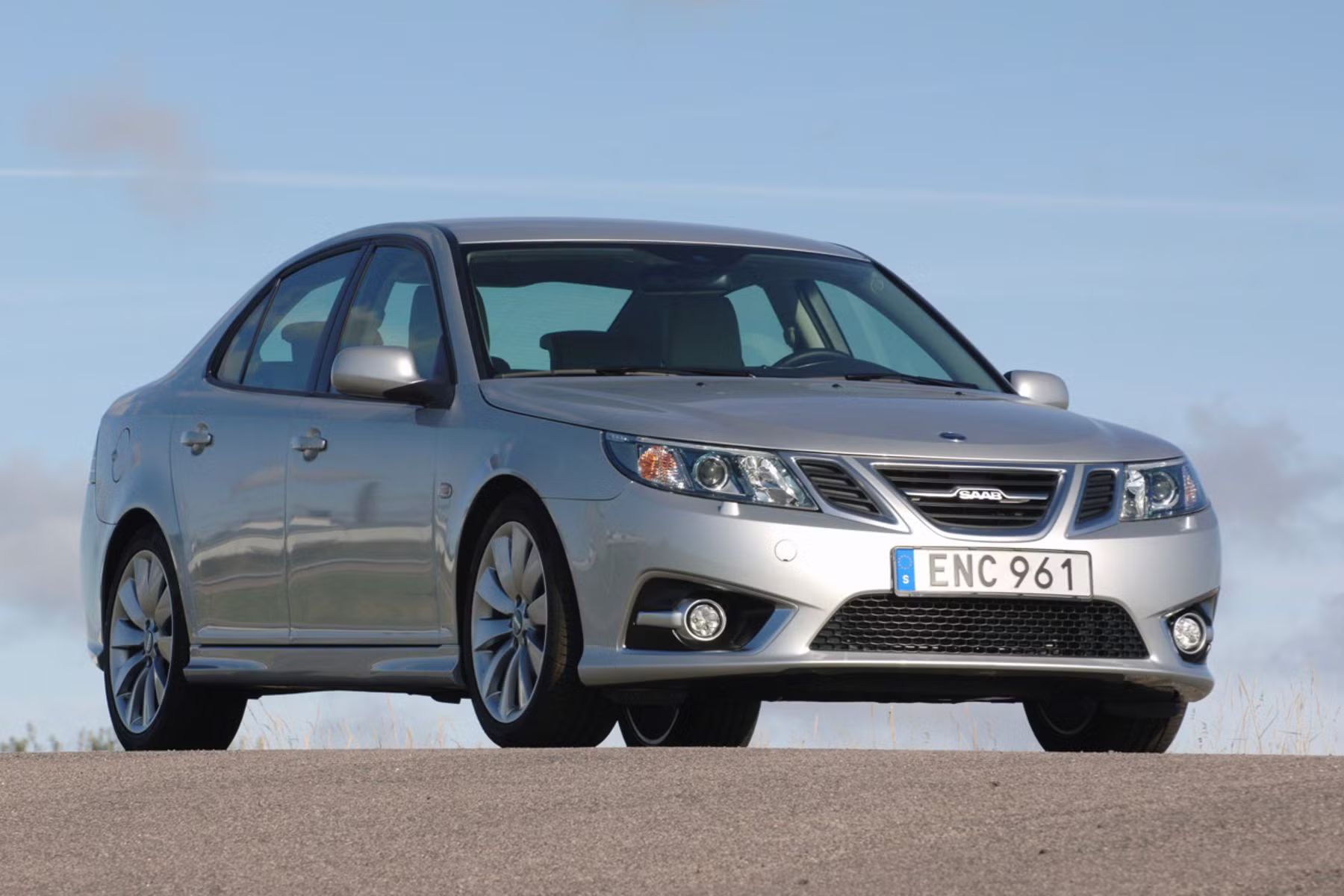
11. **Saab’s Pivotal Reintroduction of Turbocharging**After the American experiments of the 1960s, the automotive world largely relegated turbochargers to the realm of commercial vehicles or niche performance machines. However, a quirky Swedish manufacturer, Saab, would single-handedly champion the technology and bring it back into the mainstream passenger car segment, fundamentally altering its perception. In 1978, Saab boldly introduced the Saab 99 Turbo, marking the “first turbo on a production car in a generation” since GM’s ambitious but ill-fated ventures.
This move was driven by a strategic vision championed by figures like Robert Sinclair, who became president of Saab Cars USA in 1979. Affectionately known as “Uncle Bob” among Saab aficionados, Sinclair pushed for a high-performance image, telling the board, “What I’m interested in selling is a high-performance Swedish four-passenger Porsche.” The Saab 99 Turbo, while revolutionary, wasn’t without its initial challenges. As Jim Smart, a Saab specialist, noted, “The very first Saab turbos were not reliable cars,” emphasizing the need for advanced engine management systems to perfect the technology.
Nevertheless, the automotive press of the era absolutely raved about the Saab 99 Turbo. Patrick Bedard of Car and Driver famously wrote, “It comes as something of a shock to all of us to discover that safe, sane, snow-proof Saab now has fetched up a model that’ll get second-gear rubber.” This enthusiastic reception, combined with Saab’s unique engineering approach and commitment to continuous improvement, began to chip away at the negative connotations associated with turbocharging, paving the way for its eventual widespread acceptance.
Car Model Information: 2025 Volkswagen Atlas 2.0T SE
Name: Saab 99
Manufacturer: Saab Automobile
Production: 1968–1984
Class: Compact executive car
Predecessor: None
Successor: Saab 90,Saab 900
Wheelbase: 2473 mm
Abbr: on (coupe)
Length: 4340 mm
Width: 1676 mm
Height: 1450 mm
Layout: Front-engine, front-wheel-drive layout
BodyStyle: sedan (automobile)
Engine: Triumph Slant-4 engine,Triumph Slant-4 engine,Saab B engine,Saab H engine
Transmission: Borg-Warner 35 transmission
Designer: Sixten Sason
Assembly: Trollhättan
Categories: 1970s cars, 1980s cars, All articles with unsourced statements, Articles with short description, Articles with unsourced statements from November 2014
Summary: The Saab 99 is a car produced by Swedish manufacturer Saab from 1968 to 1984; their first foray into a larger class than the Saab 96. While considered a large family car in Scandinavia, it was marketed as a niche compact executive car in most other markets. It was manufactured both in Sweden and Finland and was succeeded by the Saab 900, although the 99 continued to be produced alongside its successor. The Saab 90, an updated, less complex version using many 900 parts took over from the 99 in late 1984.
Get more information about: Saab 99
Buying a high-performing used car >>>
Brand: Saab Model: 99 Turbo
Price: $40,000 Mileage: 8,605 mi.
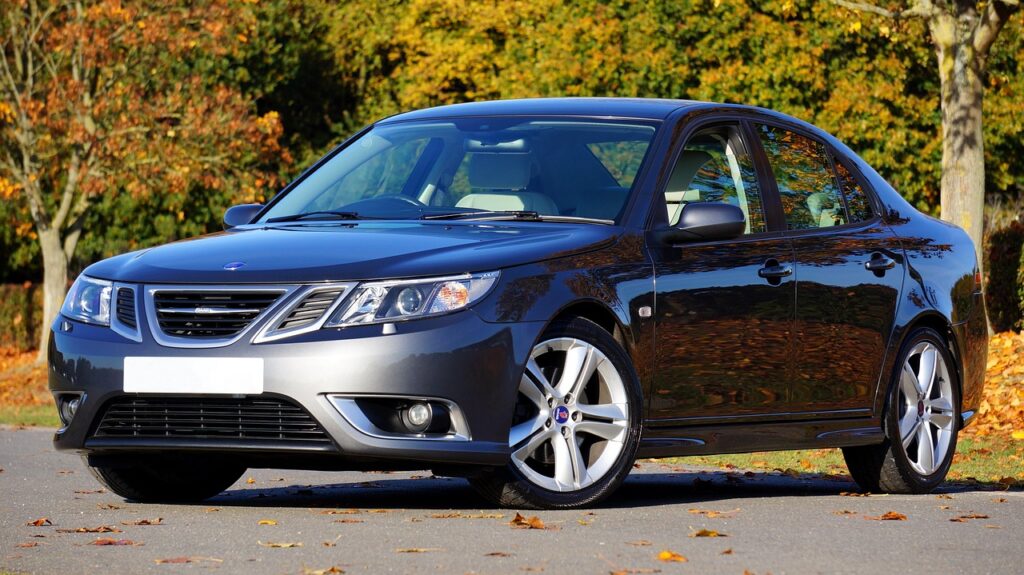
12. **Saab’s Engineering Breakthroughs: Automatic Performance Control (APC)**Saab’s commitment to refining turbocharging technology culminated in a truly significant engineering breakthrough in 1982: the introduction of Automatic Performance Control (APC). This ingenious system was designed to address one of the perennial challenges of turbocharged gasoline engines—engine knock or detonation, which occurs when the air-fuel mixture ignites prematurely under high pressure and temperature, potentially causing severe engine damage. The APC system marked a pivotal moment, transforming the turbocharger from a temperamental component into a reliable, integrated part of the engine’s overall performance.
At its core, the APC system employed a microphone that “listened” to the engine’s combustion, detecting the faint sounds of incipient knock. When knock was detected, the system would instantly adjust ignition timing and boost pressure on the fly, optimizing performance while simultaneously safeguarding the engine. This dynamic, real-time management allowed Saab to utilize higher boost pressures for more power while maintaining impressive fuel economy and, crucially, significantly enhancing the engine’s reliability and longevity, even with varying fuel qualities.
The successful integration of APC not only enhanced the driving experience by providing consistent, reliable power delivery but also fundamentally changed the perception of turbocharged engines. It made them “functional, reliable and economical,” according to the source material. This innovation was so impactful that the word “turbo” quickly became synonymous with the Saab brand itself, restoring credibility to a technology that had previously been associated with engineering headaches and commercial failures.
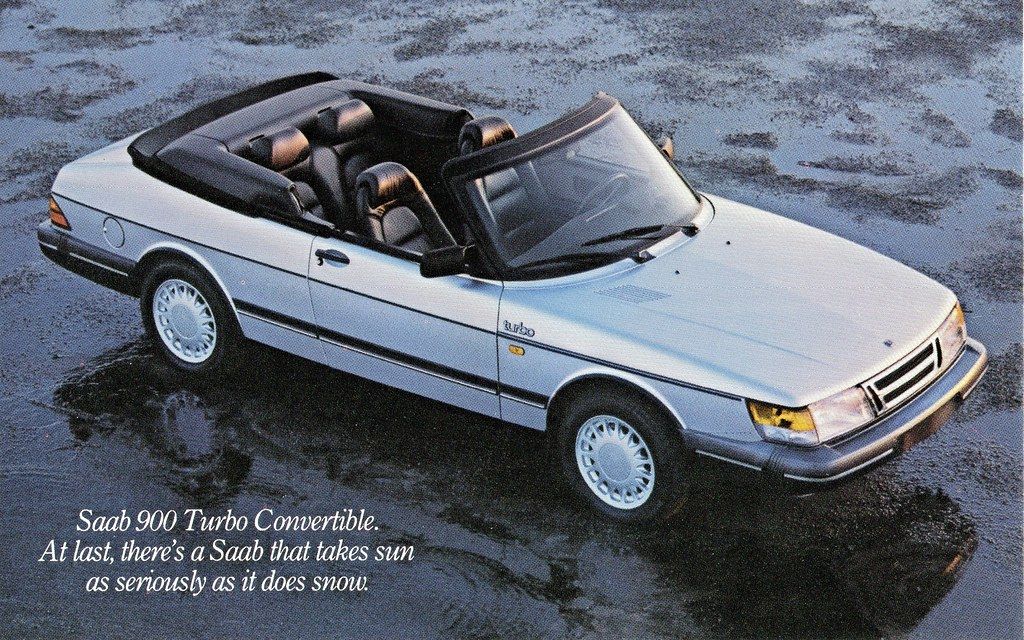
13. **The Saab Convertible and Turbo’s Prestige**Saab’s crowning achievement in solidifying the turbo’s positive image, and arguably its own, came in 1983 with the introduction of the Saab 900 convertible. Initially, this was a difficult proposition, as the company in Sweden forced a stripped two-door notchback onto Saab USA. However, Robert Sinclair, the visionary president, insisted on significant upgrades, transforming it into a luxurious offering with cast wheels, a premium sound system, and leather upholstery. The final, critical addition, as he famously recalled, was “a convertible top.”
Launched in 1986, the Saab convertible hit showrooms at a crucial time. America was still grappling with the lingering effects of the 1970s oil crisis, which had shifted consumer focus towards fuel efficiency. A convertible that combined open-air freedom with a “peppy, fuel-efficient turbo engine” was an irresistible combination. It became an instant “smash hit,” with a quarter of a million Saab convertibles sold over 20 years, proving the viability and desirability of turbocharged performance in a mass-market, aspirational vehicle.
The success of the Saab convertible did more than just boost sales; it fundamentally changed the cultural standing of the turbocharger. The Saab made the turbo “more than acceptable; it was prestigious.” So strong was this newfound prestige that even owners of non-turbo Saabs desired to project the turbo image. As one Saab parts worker quipped, he “sold more turbo badges than cars,” a testament to how Saab had transformed the turbo from a problematic engineering component into a symbol of performance, sophistication, and desirability.
Car Model Information: 1995 Saab 900 SE
Name: Saab 900
Caption: Saab 900 SE Turbo 3-door
Manufacturer: Saab-Scania,Saab Automobile
Production: 1978–1998
Assembly: Sweden:,Trollhättan,Arlöv,Malmö,Uusikaupunki
Class: Compact executive car
Layout: Front-engine, front-wheel-drive layout
Predecessor: Saab 99
Successor: Saab 9-3
Categories: 1980s cars, 1990s cars, All Wikipedia articles needing clarification, All articles needing additional references, All articles that may contain original research
Summary: The Saab 900 is a mid-sized automobile produced by Swedish manufacturer Saab from 1978 until 1998 in two generations: the first from 1978 to 1994, and the second from 1994 to 1998.
The first-generation car was based on the Saab 99 chassis, though with a longer front end to meet U.S. frontal crash regulations and to make room for the turbo-charged engines, air conditioning and other equipment that was not available in the early days of the 99 model. The 900 was produced in 2- and 4-door sedan, and 3- and 5-door hatchback configurations and, from 1986, as a cabriolet (convertible) model. There were single- and twin-Zenith carburettor; fuel injected, and turbocharged engines, including Full Pressure Turbo (FPT) and, in European models during the early 1990s, Low Pressure Turbos (LPT).
Get more information about: Saab 900
Buying a high-performing used car >>>
Brand: Saab Model: 900
Price: $14,999 Mileage: 15,987 mi.

14. **Re-acceptance and Proliferation of Turbocharging**With Saab successfully quashing the technical and image problems that had plagued early turbocharged vehicles, the technology slowly but surely began to creep back into the broader automotive market. By the mid-1980s, the stigma had largely dissipated, and manufacturers, observing Saab’s triumph, cautiously started to re-embrace forced induction. This decade saw a diverse array of turbocharged models emerge, from the practical Volvo wagon to performance-oriented machines like the Porsche 944, the Ford Mustang SVO, the Datsun 280ZX, the Dodge Daytona Shelby Z, and Chrysler’s LeBaron GTS, indicating a growing confidence in the technology’s reliability and market appeal.
The subsequent decades witnessed an even greater proliferation, driven by relentless advancements in engine management systems, material science, and manufacturing techniques, which made turbochargers more efficient, reliable, and seamlessly integrated than ever before. Modern turbochargers are now far more efficient, reliable, and easier to maintain than their early counterparts, overcoming the design flaws and maintenance burdens of their predecessors. Manufacturers have developed sophisticated systems that optimize power delivery while minimizing turbo lag, making turbocharged vehicles not only powerful but also practical for everyday use across a wide range of driving conditions.
Today, turbocharging is not merely a niche performance feature but a ubiquitous component across a vast spectrum of vehicles, from compact sedans to luxury SUVs. According to an Environmental Protection Agency report, by the 2020 model year, an impressive 35 percent of new vehicles sold were turbocharged, highlighting its mainstream acceptance and critical role in meeting global fuel efficiency standards and performance expectations. The successful integration of turbocharging in popular engines like Ford’s EcoBoost and Volkswagen’s TSI underscores its evolution into a highly refined, practical, and indispensable automotive technology.
Car Model Information: 1990 Porsche 944 S2 Cabriolet
Caption: 1986 944 Turbo (951) US-spec
Name: Porsche 944
Manufacturer: Porsche AG
Class: Sports car
Production: 1982–1991
Layout: Front-engine, rear-wheel-drive layout
Assembly: Neckarsulm,Stuttgart
Designer: Harm Lagaay
Predecessor: Porsche 924
Successor: Porsche 968
BodyStyle: coupé,convertible
Engine: Straight-four engine,Turbocharger,2.7 L M44/12 I4,3.0 L M44/41 I4
Wheelbase: 2400 mm
Abbr: on
Length: 1986–1988: {{convert,4318,mm,in,1,abbr=on
Width: 1735 mm
Height: 1275 mm
Transmission: Automatic transmission,Manual transmission
Weight: Pre-1988: {{convert,1180,kg,lb,0,abbr=on
Categories: 1990s cars, All articles needing additional references, All articles with unsourced statements, Articles needing additional references from September 2024, Articles with short description
Summary: The Porsche 944 is a sports car manufactured by German automobile manufacturer Porsche from 1982 until 1991. A front-engine, rear-wheel drive mid-level model based on the 924 platform, the 944 was available in coupé or cabriolet body styles, with either naturally aspirated or turbocharged engines. With over 163,000 cars produced, the 944 was the most successful sports car in Porsche’s history until the introductions of the Boxster and 997 Carrera.
Extensive design revisions for the 1992 model year prompted Porsche to drop the 944 nameplate and rebrand the vehicle as the 968.
Get more information about: Porsche 944
Buying a high-performing used car >>>
Brand: Porsche Model: 944
Price: $17,900 Mileage: 96,579 mi.
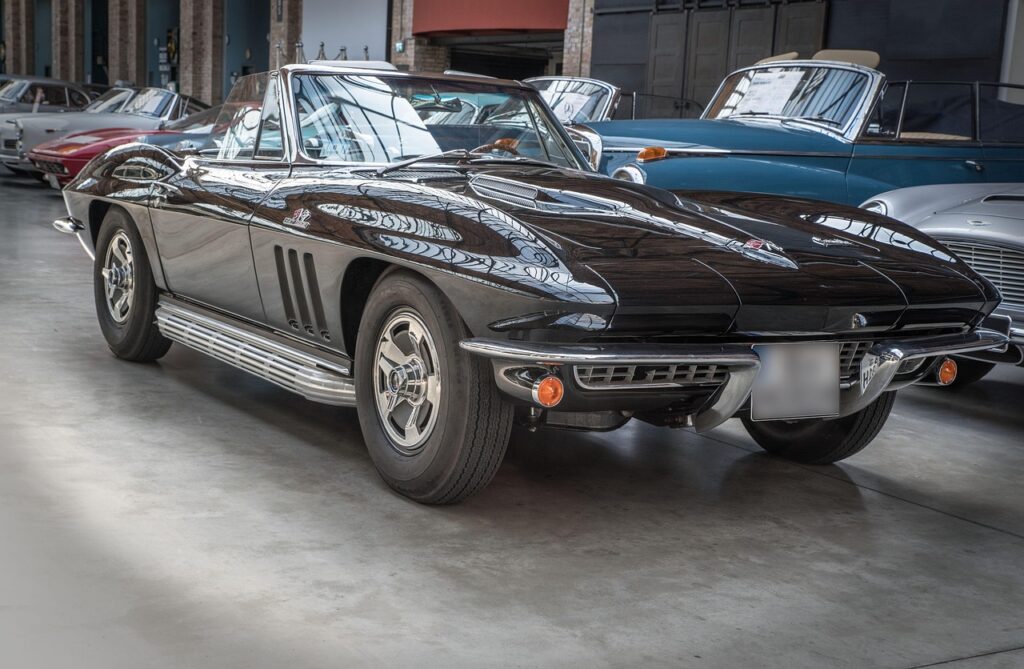
15. **The Enduring Legacy of the Pioneers**The Oldsmobile Jetfire and Chevrolet Corvair, despite their tumultuous and short-lived commercial runs, undeniably represent significant, even pivotal, milestones in the annals of automotive engineering history. They were, in essence, vehicles ahead of their time, bravely showcasing the nascent potential of turbocharged technology in an era that was arguably not yet ready for its complexities and demands. While they faced formidable challenges that ultimately limited their immediate success and led to their premature discontinuation, their innovations were not in vain.
The lessons painfully learned from the Jetfire’s maintenance complexities and reliability issues, and the Corvair’s public safety controversies and thermal management struggles, profoundly influenced future automotive designs and engineering approaches. These early attempts, though flawed, provided invaluable data and insights into the intricacies of forced induction, highlighting critical areas for development in materials, fluid injection, thermal control, and, crucially, consumer education. General Motors, for instance, learned a bitter lesson, not touching another turbo until the Buicks of the 1980s, by which time technology had evolved considerably.
As we look back at these pioneering models, it becomes clear that they played a crucial, foundational role in shaping the future of automotive design and engineering. The groundwork laid by the Jetfire and Corvair, albeit through trial and error, inadvertently paved the way for the sophisticated and ubiquitous turbocharged machines we effortlessly navigate today. Their legacy is a powerful testament to the often circuitous path of innovation, proving that even apparent failures can be essential stepping stones to monumental achievements in technology.
Read more about: The Apex of Automotive Value: Exploring the World’s Most Expensive Cars Sold at Public Auction
From the bold, if flawed, experiments of the Oldsmobile Jetfire and Chevrolet Corvair, through Saab’s visionary revival and technical mastery, to its current ubiquitous presence, turbocharging has undergone a remarkable journey of evolution. These early trailblazers, despite their initial setbacks, ignited a spark of innovation that would burn quietly for a time before roaring back to life, demonstrating how the pursuit of performance and efficiency can continually reshape the very essence of what drives us. The story of the first turbocharged cars is a powerful reminder that every revolutionary advancement stands on the shoulders of those who dared to try, learn, and persist, ultimately transforming ambitious ideas into the indispensable technologies of tomorrow.

